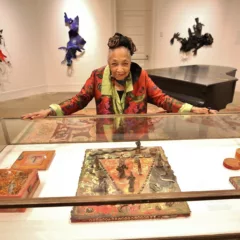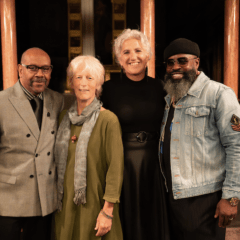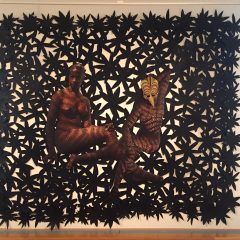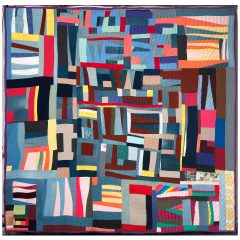Anthony Goicolea’s parents fled from Cuba to the United States in 1961, after the Communist revolution and landed in Atlanta, where the artist was born (in 1971) and raised. All of the photographs and mixed-media pieces created between 2007 and 2013, and now on display at Swarthmore’s List Gallery, in one form or another, relates to displacement.
The theme of displacement runs through the show in landscapes of abandonment
The theme of displacement in Figure/Ground is most poignantly demonstrated in “The Follow,” one of Goicolea’s large-scale Cibachrome prints. In the print, a horse laden with a family’s possessions is led away from a what was once a fine home (circa 1941?), perhaps in Cuba, now deserted. The firewood and (art)books (added by the artist to the image) abandoned, but at least not burning, or not yet burning, prefigure the journeys of today’s world refugees who tragically must leave so much behind.
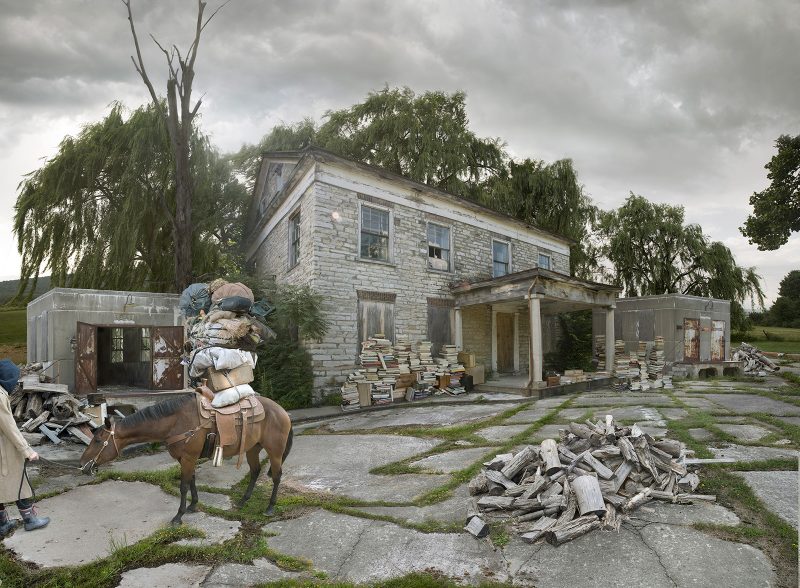
In “Ruins in the Forest,” another large-scale print in the show, the human inhabitants of a lush jungle encampment have disappeared, leaving the remnants of their lives to a family of lounging hyenas. If the composition of these large pieces was not so immensely appealing for their depictions of beautiful and exotic places suggesting mysterious stories, you might experience them as dystopian. Indeed, some of Giocolea’s other work does depict sites of industrial decay, and are far more evocative of a crumbling, lost society.
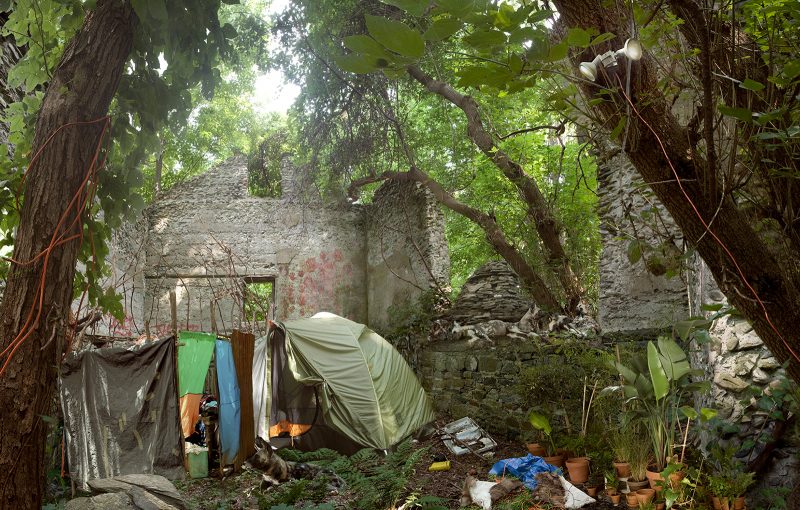
Family portraits imbued with sad memories
In a fantastic play upon figure/ground perception and positive/negative in photography, Figure/Ground also includes captivating portraits – diptychs – of Anthony Goicolea’s Cuban parents as children, children who look like they might be from anywhere, perhaps from the abandoned villa in “The Follow.”
When you see these pieces, you wonder, are they photographs, positive and negative? But it turns out they are not. From images of his parents, gathered perhaps from old family photographs, Goicolea hand-drew each of their portraits as if in the negative, with graphite. Then, from each of those drawings, he digitally created the positives (converting them to Cibachrome prints), and the pair are displayed side by side.
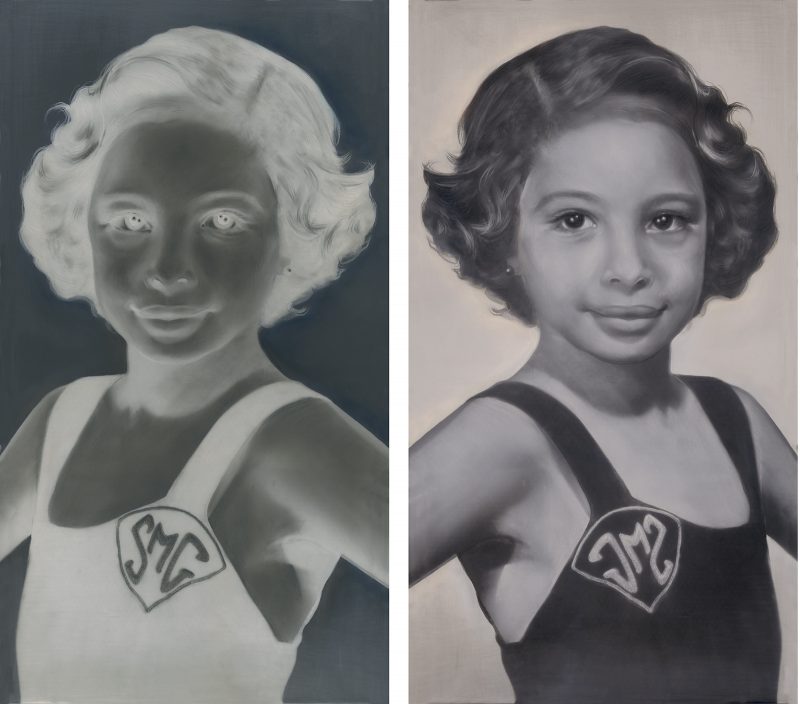
I thought: the artist is essentially recreating the operation of memory, replicating the experience of recording, preserving, and ultimately reconstituting the essence of perception, creating archetypes, here of loved ones lost. The show also includes “Family Grids” – portraits of Goicolea’s relatives presented in arrays which appear to be from the second half of the twentieth century — formal reunions of families which have been disrupted by time and by other forces over which they had no control.
Figure/Ground also includes a wall of black and white digital prints, part of a larger series, Related, in which Giocolea has affixed portraits (positive and negative), presumably of his relatives, to trees, walls, and telephone poles. Many of the configurations, perhaps unintentionally, overall suggest crosses. The wiring apparently relates to frayed communications and connections, and the portraits to missing persons’ posters and to the public propaganda often displayed in communist countries. They reminded me of the work of the French artist, JR, who wheatpastes large photographs of people who might otherwise be overlooked in prominent, and often unusual public places.
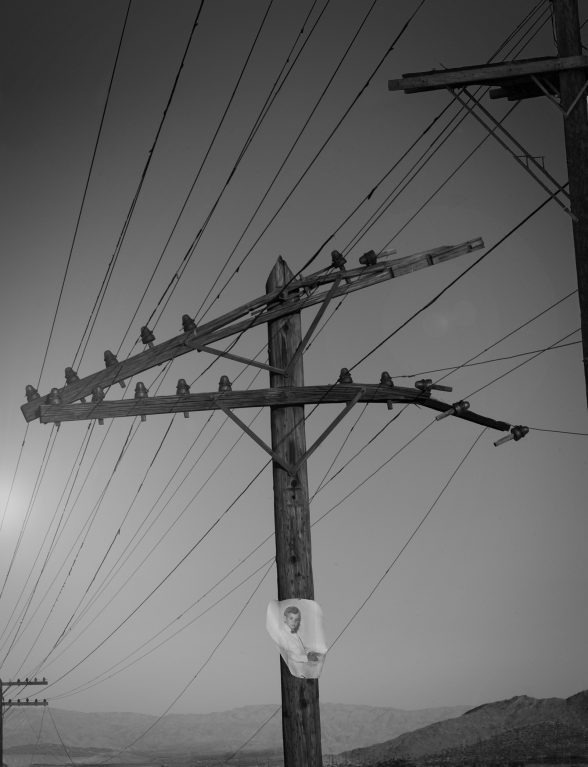
Universal themes of family and homeland point to contemporary migration stories
None of the work in Figure/Ground, including the portraiture, identifies Cuba or Cubans as its source – although Cuba obviously is one of its points of reference, and the artist’s relatives are Cuban. There is a sense of universality in this work: the landscapes portrayed could be anywhere, and the people from anywhere.
Goicolea received an M.F.A. in sculpture and photography from Pratt Institute of Art, and has been the recipient of a Cintas Fellowship, the BMW Photo Paris Award, and a grant from the Joan Mitchell Fellowship Foundation. New York State has commissioned him to create the State’s official monument honoring the LGBTQ community. His work has been widely exhibited, and is included in the collections of distinguished museums and institutions around the country.
Anthony Goicolea’s Figure/Ground, curated by Andrea Packard, Director, List Gallery, Swarthmore College, will be on display through February 22, 2018.


